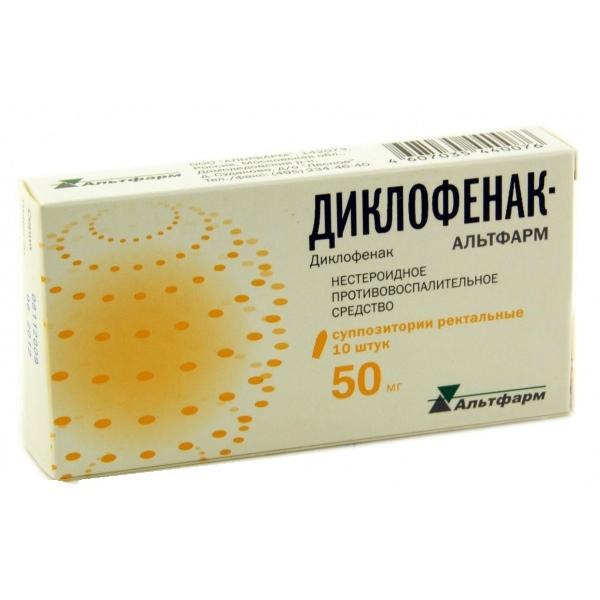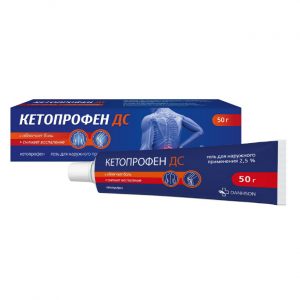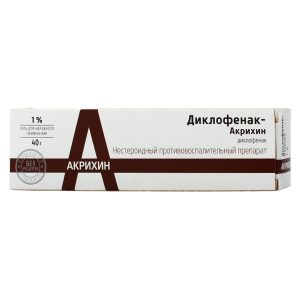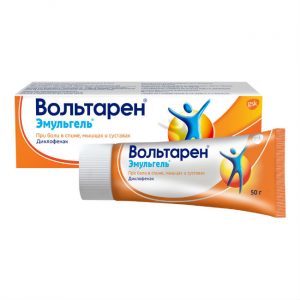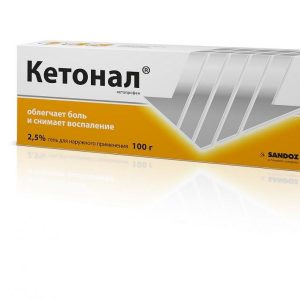Description
Release form
Rectal suppositories.
Packing
10 pcs.
Pharmacological action
DICLOFENAC-ALTPHARM – non-steroidal anti-inflammatory drug (NSAIDs). It has anti-inflammatory, analgesic and antipyretic effects. It inhibits the COX enzyme in the cascade of arachidonic acid metabolism and disrupts the biosynthesis of prostaglandins.
When used externally, it has anti-inflammatory and analgesic effects. Reduces and eliminates pain at the site of ointment application (including joint pain at rest and during movement), reduces morning stiffness and swelling of the joints. Helps increase range of motion.
Contraindications
– pathological changes in the blood picture of unclear genesis
– peptic ulcer of the stomach and duodenum sdlkp breastfeeding should be abandoned)
– children and adolescents under 12 years of age (i / m administration, supp.)
– children under 6 years of age (tablets, ointment)
– increased sens pheno- to aspirin or other NSAIDs (including aspirin triad)
– hypersensitivity to diclofenac and other components of the drug
– inflammation of the rectum – proctitis (suppositories)
Diclofenac is possible only under strict medical supervision after a careful assessment of the benefit / risk ratio in the following conditions: congenital hematopoiesis (induced porphyria) ) systemic lupus erythematosus and other systemic diseases of the connective tissue the presence of complaints about the function of the gastrointestinal tract, or with suspected gastric ulcer or 12 duodenal ulcer, as well as with erosive-ulcerative lesions (ulcerative colitis, Crohn ² ¢s disease) in patients with previous kidney disease and / or severe impaired liver function in severe arterial hypertension and / or heart failure in elderly patients immediately after surgery.
With great care and only under the direct supervision of a doctor, Diclofenac can be used in patients with bronchial asthma, allergic rhinitis, polyps of the nasal mucosa, as well as in chronic obstructive respiratory diseases and chronic respiratory infections due to the risk of an asthma attack, edema Quincke or urticaria.
Special instructions
Diclofenac ointment (gel) should be avoided on damaged skin surfaces, open wounds, eyes and mucous membranes.
The use of diclofenac in the form of an ointment is possible only as directed by a doctor in the following cases: peptic ulcer of the stomach and duodenum with a history of impaired liver and kidney function, severe disorders of the hematopoietic system, bronchial asthma, rhinitis, polyps of the nasal mucosa allergic reactions in history.
Use caution with the drug concomitantly with other NSAIDs.
Use in pediatrics
If necessary, use the drug in the form of an ointment in children under the age of 6 years and requires the supervision of a doctor.
Effect on the ability to drive a car and control mechanisms
Due to the fact that the use of the drug in high doses may develop side effects such as dizziness and a feeling of tiredness, in some cases, the ability to drive a car or other moving objects is impaired. These phenomena are amplified while taking alcohol.
Composition
1 suppository contains diclofenac sodium 50 mg excipients: solid fat.
Dosage and administration
Rectally. Adults: 100 mg 1 time per day, 50 mg 2 times a day or 25 mg 3-4 times a day.
The maximum daily dose is 150 mg.
Children over 12 years of age: 50 mg 1-2 times a day or 25 mg 2-3 times a day.
Side effects
Side effects depend on the individual sensitivity, the amount of dose used and the duration of treatment.
From the digestive system: nausea, vomiting, epigastric pain, anorexia, flatulence, constipation, gastritis up to erosive with bleeding, increased transaminase activity, drug hepatitis, pancreatitis.
Urinary system: interstitial nephritis.
From the side of the central nervous system: headache, dizziness, disorientation, agitation, insomnia, irritability, fatigue, aseptic meningitis.
From the respiratory system: bronchospasm.
From the hemopoietic system: anemia, thrombocytopenia, leukopenia, agranulocytosis.
Dermatological reactions: exanthema, erythema, eczema, hyperemia, erythroderma, photosensitivity.
Allergic reactions: erythema multiforme, Lyell’s syndrome, Stevens-Johnson syndrome, anaphylactic reactions, including shock.
Local reactions: burning, formation of infiltrate, adipose tissue necrosis are possible at the injection site.
Other: fluid retention, edema, increased blood pressure.
For external use of
Skin rash, burning, and redness are possible at the site of application of the ointment. With prolonged external use of the drug, it is possible to develop systemic side effects from the digestive system, central nervous system, respiratory system, as well as allergic reactions.
Drug interaction
With the simultaneous use of the drug Diclofenac with digoxin, phenytoin or lithium drugs, it is possible to increase the plasma concentrations of these drugs with diuretics and antihypertensive agents – it is possible to decrease the effect of these drugs with potassium-sparing diuretics – hyperkalemia with acetisalicylic acid may develop in blood plasma and an increased risk of side effects.
Diclofenac may enhance the toxic effects of cyclosporine on the kidneys.
Diclofenk can cause hypo- or hyperglycemia, therefore, when used simultaneously with hypoglycemic agents, monitoring of blood glucose concentration is required.
When methotrexate is used within 24 hours before or after taking Diclofenac, an increase in the concentration of methotrexate and an increase in its toxic effect are possible.
With simultaneous use with anticoagulants, regular monitoring of blood coagulation is necessary.
Storage conditions
Store in a dry, dark place at a temperature not exceeding 25 C. from light at a temperature not exceeding 25 ° C. Keep out of the reach of children.
Expiration
2 years.
active substance
Diclofenac
Conditions of release from drugstores
Prescription
L karstvennaya form
suppozytoryy rektaln e
Altfarm, Russia
